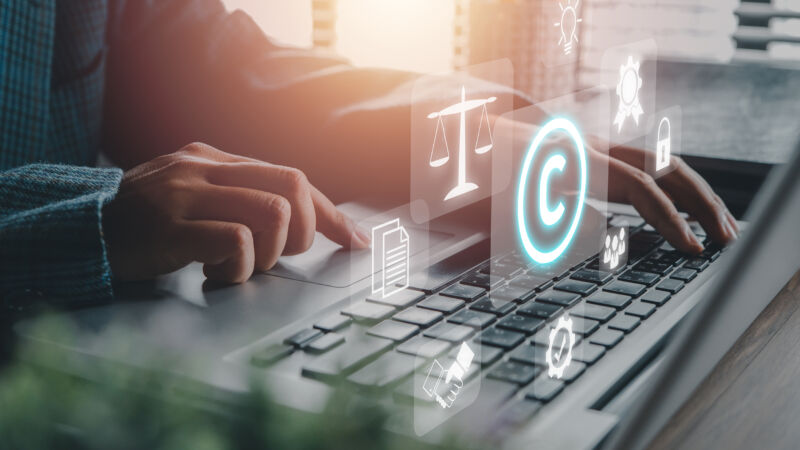A company’s intellectual property (IP) is among its most valuable holdings. In today’s market, a company will either thrive or wither depending on the strength of its IP and how well the company protects it.
What are the different types of intellectual property?
Intellectual property falls into four categories. While there are similarities, and infringement often crosses borders, each category is its own distinct type:
- Patents: Short-term protections (20 years, tops) on inventions and processes.
- Copyrights: Medium-term protections (life of creator plus 70 years) on creative works.
- Trademarks: Potentially eternal protections (but need renewal every 10 years) on words, symbols, and/or designs that define the owner’s product/service in the public imagination and differentiate it from competitors.
- Trade secrets: Potentially eternal protections on tradecraft, such as customer accounts and marketing strategies, barring the secrets from becoming common knowledge.
What are intellectual property rights?
A holder of an intellectual property has several exclusive rights related to the IP. These include the exclusive license to:
- (for trade secrets and patents) use the IP to implement systems, strategies, and processes for commercial or non-commercial reasons;
- (in the case of copyright) utilize the IP commercially, such as selling copies of the IP or distributing it publicly;
- (for trademarks) use the IP to sell products and services.
What is intellectual property infringement?
Intellectual property infringement is when an unauthorized party infringes upon the IP holder’s exclusive license to exploit the intellectual property. The following examples illustrate some different manifestations of IP infringement:
- Patents: An infringer creates a product or service based upon designs and processes that belong to the patent holder.
- Copyright: An infringer makes an unauthorized copy of a copyright-protected piece of music and sells it to consumers.
- Trademarks: An infringer attempts to sell its product using a logo that’s considered too similar to the trademark holder’s.
- Trade secrets: An infringer enters a new market sector, its strategy based upon client analyses considered to be the exclusive property of the IP holder.
Intellectual property litigation
Intellectual property infringement is a serious threat to a company’s livelihood. One of the most valuable services that a law firm provides to its clients is to ensure their IP is fully protected and when necessary, go to court to defend their IP from infringers.
What do IP litigators do?
In court, IP litigators have a common task regardless of the type of intellectual property in question. If they represent the plaintiff, they need to prove two essential things: that their client has legitimate ownership of the IP, and that the defendant has violated this ownership, whether deliberately or unintentionally.
What skills do IP lawyers need?
Most attorneys who specialize in a particular type of IP need to stay up to date on relevant federal regulations and court decisions affecting the sector.
Attorneys who represent claims for patents and trademarks will need to register with the U.S. Patent and Trademark Office (USPTO). To do so, they must present evidence of their undergraduate studies in a relevant field and pass the USPTO’s “entrance” exam. If an IP attorney chooses to focus instead on copyrights or trade secrets, this registration usually won’t be necessary.
With IP covering four different areas, let’s take a look at what litigation in each sector entails.
Patent litigation
In patent litigation, plaintiffs allege direct infringement—in which the defendant has allegedly manufactured, used, sold and/or imported the plaintiff’s patented invention, method, or service without permission—or indirect infringement, in which the defendant allegedly enabled or induced a third party to commit the infringement.
Patent litigation occurs in civil court and takes on average three to five years. Median case costs are in the $4 million range. Cases are usually tried before a jury. If the defendant is found to have infringed, the court may levy financial damages and injunctions preventing the defendant from using the infringed patent.
Copyright litigation
For copyright litigation, a copyright owner seeks to prohibit the defendant’s unauthorized use of the copyrighted materials and to recover damages.
There is a “statute of limitations” on copyright infringement: a plaintiff has three years after discovering potential copyright infringement in order to file a lawsuit. According to a 2017 American Intellectual Property Law Association report, the average cost of litigating a copyright infringement case in federal court is $278,000 and cases may take over a year to litigate. The newly created Copyright Claims Board handles copyright infringement claims whose maximum statutory damages are $15,000 per work and $30,000 per claim.
A plaintiff alleging copyright infringement must establish in court that it owns a valid copyright (registered with the U.S. Copyright Office) and that the defendant infringed upon it.
Copyright litigation may also entail criminal prosecution by the U.S. government. Here, federal prosecutors seek to prove that the defendant acted willfully and/or sought commercial or financial gain via its infringement. If they prove these charges, the defendant faces criminal penalties that include imprisonment for up to five years and fines of up to $250,000 per offense.
Trademark litigation
In trademark litigation, a plaintiff typically makes the following claims concerning the infringement:
Likelihood of confusion. The trademark holder argues that the similarity of its trademark and the defendant’s confuses customers as to who is providing the products or services in question. To establish likelihood of confusion, a trademark holder argues that the competing trademarks have proximity (same geographic region, for example) and similarity of design.
Trademark dilution. Plaintiffs argue that a rival, unauthorized trademark, similar in image or name, reduces their trademark’s distinctiveness and thus dilutes its value.
Trademark infringement lawsuits that advance to trial typically cost between $375,000 to $2 million. If the trademark owner proves infringement, remedies include injunctions to prevent the defendant from using the trademark in the future, destruction of defendant’s products using the infringed-upon trademark, and monetary damages.
Trade secret litigation
In trade secret litigation, the IP in question must fall into the defined category of trade secret, which has three core parts:
- The information must have “actual or potential independent economic value by virtue of not being generally known;”
- It must have value to other individuals who cannot “legitimately” obtain it; and
- It must be subject to “reasonable efforts” to maintain the secrecy of that information.
The trade secret holder must also prove in court that the secret was “misappropriated or wrongfully taken.” A 2019 AIPLA report estimated the median cost to litigate cases involving financial risk between $10 million and $25 million was $4.1 million.
As with copyright, there are more severe repercussions for trade secret infringement than in trademark or patent violations. If a defendant is proved to have violated the 1996 Economic Espionage Act, they may be hit with a $500,000 fine and receive up to 10 years in prison. Corporations found in violation of the Act may be fined as much as $5 million and the government may seize any purported stolen secrets and property.
Intellectual property litigation tools
Intellectual property is at the heart of a company’s business, and protecting it is paramount. That said, litigation can be lengthy and costly, and it requires skillful work from litigators to prove IP infringement in court.
There are ways to make the process more cost-efficient and less complex. The use of technology can improve a plaintiff’s research, speed up discovery, and enable attorneys to craft a more compelling and thorough argument in court. A service like Practical Law is an all-in-one tool with practicing attorney-editors offering expert guidance to help you through an intellectual property litigation case.








